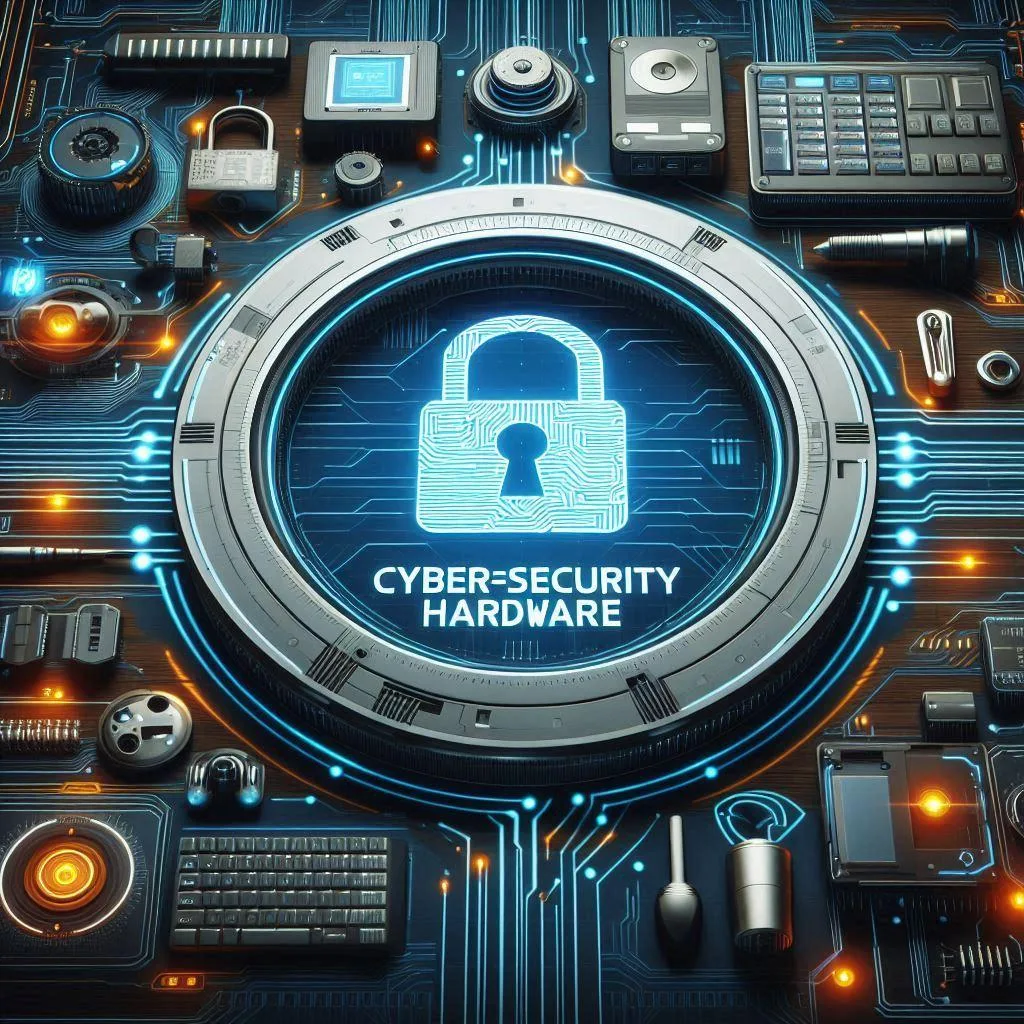1. Definition and Importance
Cybersecurity hardware refers to physical devices specifically designed to protect computer systems and networks from a range of cyber threats. While software security solutions play a key role, hardware provides an essential, foundational layer of protection. These devices ensure sensitive data and systems remain secure from unauthorized access, tampering, and cyber-attacks.
Why is cybersecurity hardware important? Unlike software, hardware security solutions operate at the core level, ensuring the integrity of systems with enhanced safeguards that are more difficult for attackers to bypass.
2. Evolution of Cybersecurity Hardware
Cybersecurity hardware has advanced significantly from the days of basic firewalls and antivirus tools. As cyber threats have become more sophisticated, hardware solutions have evolved to offer greater protection. Modern cybersecurity hardware includes:
– Intrusion Detection Systems (IDS)
– Intrusion Prevention Systems (IPS)
– Hardware Security Modules (HSM) (Learn more about HSMs)
3. Key Types of Cybersecurity Hardware
Firewalls
Firewalls serve as the frontline defense in network security. They act as barriers between trusted internal systems and untrusted external networks. Hardware-based firewalls are often more robust than software counterparts, as they provide dedicated resources to monitor and manage network traffic based on pre-defined security rules. Learn more about hardware security and best practices.
Intrusion Detection Systems (IDS)
IDS devices monitor network traffic for suspicious activity. They notify administrators when potential security breaches are detected, adding an extra layer of defense that enables early responses to attacks.
Intrusion Prevention Systems (IPS)
Unlike IDS, IPS takes a more proactive role by blocking threats in real-time. These systems analyze network traffic, automatically stopping malicious activity before it reaches critical systems.
Hardware Security Modules (HSM)
HSMs are specialized devices used to manage and safeguard cryptographic keys. By conducting cryptographic operations in a secure environment, HSMs ensure sensitive data is protected from tampering or unauthorized access.
Secure Access Gateways
Secure Access Gateways control user access to networks, ensuring that only authorized personnel can enter sensitive systems. These devices provide robust authentication and access control to prevent data breaches.
Endpoint Security Devices
With mobile workforces on the rise, endpoint security has become increasingly vital. Endpoint security devices protect individual devices like laptops and smartphones, often featuring antivirus protection, encryption, and remote wipe capabilities to secure data.
4. Key Features of Cybersecurity Hardware
Robustness and Reliability
High-quality cybersecurity hardware is designed to provide long-lasting protection against both physical and digital threats. These devices are built to withstand extreme conditions, ensuring that they maintain security measures consistently over time.
Performance and Scalability
As your organization grows, so too should your security infrastructure. Scalability ensures that hardware can expand with your organization’s needs without compromising performance.
Integration and Compatibility
Cybersecurity hardware should be compatible with existing systems and software environments. Seamless integration allows for easier management and deployment without disruptions.
Management and Maintenance
Devices with easy-to-use interfaces and automated updates help ensure that security is maintained without requiring extensive manual interventions. This reduces downtime and ensures your systems are always protected.
5. How Cybersecurity Hardware Works
Data Encryption and Decryption
Hardware security devices often handle critical encryption and decryption processes. Hardware-based encryption, in particular, provides a stronger level of protection compared to software-based solutions, ensuring that sensitive data is always safeguarded during transmission and storage.
Traffic Monitoring and Analysis
Cybersecurity hardware continuously monitors network traffic for potential threats. Real-time analysis enables administrators to identify suspicious activities and mitigate risks before they cause significant damage.
Threat Detection and Prevention
By using machine learning and other advanced algorithms, cybersecurity hardware can identify and block malicious activities in real-time. Explore the applications of machine learning in cybersecurity.
Authentication and Access Control
Hardware devices play a crucial role in user authentication and access control. These systems ensure only authorized individuals can access critical resources, preventing data breaches and maintaining system integrity.
6. Benefits of Using Cybersecurity Hardware
Enhanced Security
Cybersecurity hardware offers superior protection by operating at a foundational level, providing robust safeguards that software alone cannot match.
Improved Performance
By offloading security tasks from software, dedicated hardware can improve overall system performance and ensure smoother operation.
Reduced Latency
Hardware-based security solutions typically respond faster to threats, reducing the potential window of vulnerability for attacks.
Better Compliance with Regulations
Cybersecurity hardware can help organizations comply with regulatory requirements by securing sensitive data and meeting strict security protocols.
7. Challenges in Implementing Cybersecurity Hardware
Cost
Initial investment in cybersecurity hardware can be substantial, including both purchase and installation costs. Long-term maintenance also adds to the expense.
Complexity
Deploying and configuring hardware security solutions can be technically complex. Organizations without dedicated IT security teams may find the setup challenging.
Maintenance
Regular updates and ongoing maintenance are required to ensure devices remain effective against evolving cyber threats. Learn how to make your hardware safe from cyberattacks.
Risk of Obsolescence
As cyber threats evolve, hardware may become obsolete. Keeping pace with new technologies is critical to maintain effective security.
8. Future Trends in Cybersecurity Hardware
AI and Machine Learning
The integration of AI and machine learning into cybersecurity hardware is a growing trend. These technologies allow devices to detect emerging threats more effectively by learning from data patterns. Learn more about the future of machine learning.
Quantum Computing
Quantum computing poses both challenges and opportunities for cybersecurity hardware. While quantum computers have the potential to break current encryption methods, they also offer new possibilities for developing more secure cryptographic techniques. Explore the implications of quantum computing.
Integration with Cloud Services
Cloud-based solutions are becoming increasingly popular, and cybersecurity hardware is being designed to integrate with cloud services, allowing for more flexible and scalable protection. Discover the emerging technologies shaping the future of cybersecurity hardware.
IoT Security Hardware
The rise of IoT devices has made security more complex. Specialized hardware is now being developed to protect IoT networks from cyber threats.
9. Conclusion: The Role of Cybersecurity Hardware in the Future
Cybersecurity hardware will continue to play a vital role in protecting digital infrastructures. From firewalls to HSMs, these devices offer a foundational layer of protection that software alone cannot provide. As technology advances, organizations must stay ahead by adopting the latest hardware solutions to ensure robust, scalable security in the face of evolving threats.


